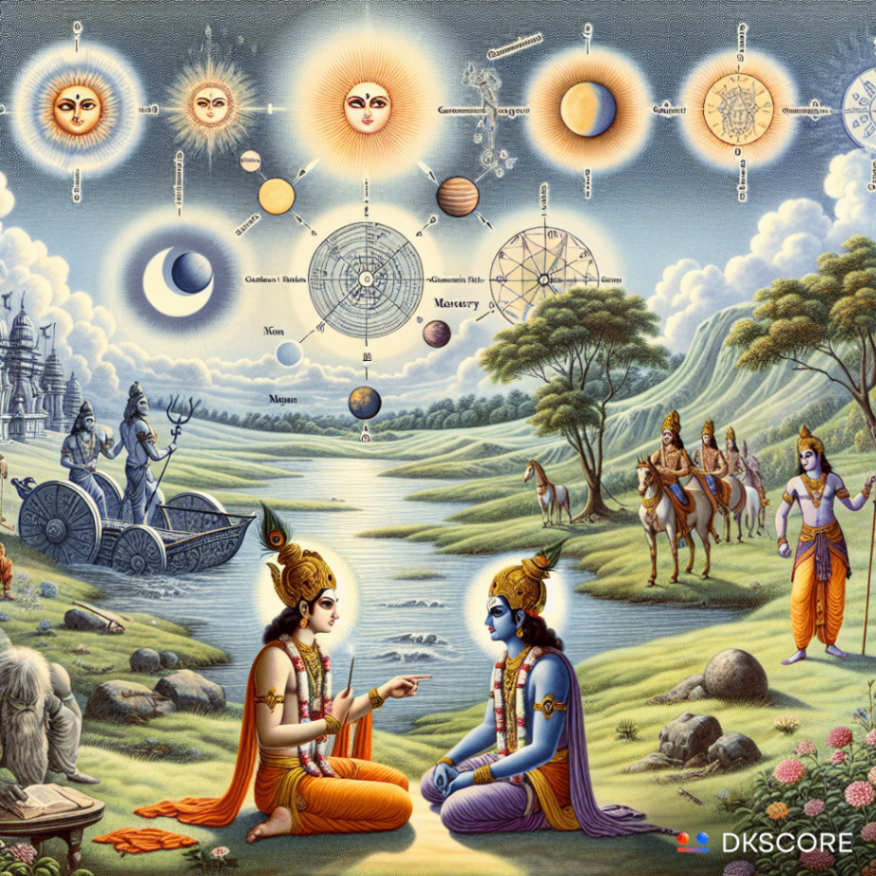The Profound Significance of Sankhya Yoga: Insights from Vedic Astrology and Bhagavad Gita
Sankhya Yoga is a concept that holds profound importance in both Vedic Astrology and the Bhagavad Gita. This article explores the meaning, significance, and application of this Yoga, shedding light on its philosophical roots and astrological implications.
What is Sankhya Yoga?
The word Sankhya translates to number, and this Yoga in Vedic Astrology is determined by counting the number of signs that the seven traditional planets (Sun, Moon, Mars, Mercury, Jupiter, Venus, and Saturn) occupy in a birth chart. This yoga provides deeper insight into an individuals inherent nature, personality traits, and life tendencies.
Sankhya Philosophy
Sankhya philosophy, one of the six classical schools of Indian philosophy, focuses on the dualism of Purusha (consciousness) and Prakriti (matter). It teaches that understanding this dualism is essential for spiritual liberation.
Purusha and Prakriti
In Sankhya Yoga, Purusha represents the eternal, unchanging consciousness, while Prakriti signifies the dynamic, ever-changing material world. The interaction between Purusha and Prakriti leads to the manifestation of the universe and the various experiences of life.
Sankhya Yoga in Bhagavad Gita
In Bhagavad Gita it refers to the path of knowledge and discernment. It emphasizes understanding the difference between the eternal self (Atman) and the temporary physical body. This knowledge leads to liberation from the cycle of birth and death.
Sankhya Yoga Meaning
The meaning of it lies in its approach to spiritual growth through knowledge and analysis. It involves understanding the principles of Sankhya philosophy and applying them to discern the true nature of reality.
Sankhya Yoga in Vedic Astrology
In Vedic Astrology, various types of yogas (planetary combinations) are used to understand different aspects of an individuals life. This Yoga focuses on the personality traits, tendencies, and character of a person. Unlike other yogas that may show their effects at certain periods of life or during specific planetary transits, Sankhya Yoga provides a deeper insight into the inherent nature of an individual.
Different Types of Sankhya Yoga
Gola Yoga: All seven planets are positioned in a single sign. Individuals with Gola Yoga may face numerous challenges due to planetary enmity and are often highly self-absorbed.
Yuga Yoga: All seven planets are distributed across two signs. People with this yoga are often fickle and influenced by their environment, experiencing perpetual dissatisfaction unless they cultivate a spiritual outlook.
Shula Yoga: The seven planets are spread across three signs. Individuals with Shula Yoga tend to be lazy, argumentative, and stubborn, with strong mental capabilities but emotional sensitivity.
Kedara Yoga: All seven planets occupy four signs. This is a common and favorable configuration, indicating hardworking, consistent, and financially successful individuals.
Pasa Yoga: The seven planets are distributed across five signs. This configuration reflects duality, amplifying both positive and negative traits depending on the rest of the chart.
Dama Yoga: All seven planets are positioned in six signs. People with this yoga are generous, wealthy, compassionate, and lead a life of purpose and meaning.
Veena Yoga: The seven planets are spread across seven signs. This highly auspicious configuration indicates versatile, multi-talented individuals skilled in music and other arts.
Is Dhyan Yoga and Sankhya the Same?
While both Dhyan Yoga (the yoga of meditation) and Sankhya Yoga emphasize spiritual growth, they are not the same. Dhyan Yoga focuses on meditation and concentration practices, whereas Sankhya Yoga centers on knowledge and discernment.
Is Gyan Yoga and Sankhya the Same?
Gyan Yoga (the yoga of knowledge) and Sankhya Yoga share similarities in their emphasis on knowledge and understanding. However, Sankhya Yoga specifically refers to the teachings of the Sankhya philosophy and its application in discerning the true nature of reality.
Sankhya Yoga in Hindi
सांख्य योग एक वैदिक ज्योतिषीय अवधारणा है जो जन्म कुंडली में सात ग्रहों के चिन्हों की गणना पर आधारित है। यह योग व्यक्ति के स्वभाव, व्यक्तित्व लक्षणों और जीवन की प्रवृत्तियों में गहरी अंतर्दृष्टि प्रदान करता है।
Conclusion
Understanding Sankhya Yoga through Vedic Astrology and the Bhagavad Gita provides valuable insights into ones personality, tendencies, and potential life challenges. By recognizing these traits, individuals can better navigate the complexities of life and work towards personal growth and fulfillment. The interplay of Purusha and Prakriti, as explained in Sankhya philosophy, offers a profound understanding of the universe and our place within it.




















